Posted by Elena del Valle on October 17, 2016

Shirley A. Aaron, author, Troubling the Ashes
Photo: Shirley A. Aaron
A podcast interview with Shirley A. Aaron, author, Troubling the Ashes, is available in the Podcast Section of Hispanic Marketing & Public Relations, HispanicMPR.com. During the podcast, she discusses racism and her book with Elena del Valle, host of the HispanicMPR.com podcast.
Shirley is a retired Alabama teacher and Georgia media specialist, with 42 years of experience in education. She attended college after her son and daughter were born, achieving a degree in education in order to teach important values through literature. In 2007, she was widowed when her husband Charles O. Aaron passed away from cancer. She is also the author of <em>Drops of Light</em>, a book of poetry, and <i>Sweet Tea with Lemon</i>, due to be published in 2017.
To listen to the interview, scroll down until you see “Podcast” on the right hand side, then select “HMPR Shirley Aaron” and click on the play button below or download the MP3 file to your iPod or MP3 player to listen on the go, in your car or at home from the RSS feed. Some software will not allow flash, which may be necessary for the play button and podcast player. If that is your case, you will need to download the file to play it. To download it, click on the arrow of the recording you wish to copy and save it to disk. The podcast will remain listed in the October 2016 section of the podcast archive.
Posted by Elena del Valle on October 14, 2016
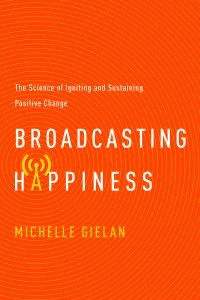
Broadcasting Happiness
Photos: BenBella Books
Can adopting a glass is half full instead of a glass is half empty outlook on life improve your performance at work? Can a two-minute habit transform a pessimist into an optimist? There are those who are convinced it is possible. Former journalist turned researcher and small business owner Michelle Gielan believes so much in the power of positive thinking she has made it her business. In Broadcasting Happiness The Science of Igniting and Sustaining Positive Change (BenBella Books, $25.95) Gielan discusses her affirming approach to business and journalism.
In her book, she cites corporate, academic and journalistic examples of the impact a happy attitude can have on results and in some cases profit. In one school district, she says, graduation rates rose from 44 percent to 89 percent over several years as a result of positive attitudes and related practices. A news series focused on happiness that aired during the recession garnered the highest viewer response that year, she explains. She declined to answer questions submitted by email via her publisher for this article.

Michelle Gielan, author, Broadcasting Happiness
One technique that can influence results is how we begin a conversation; by priming the brain with the tone we seek from the beginning we improve the likelihood of accomplishing our goal, the author says in the second chapter. Because we receive an overwhelming amount of input every second our brains struggle to pay attention to it all so turning people’s attention to the positive might allow them to avoid the paralyzing effects of the negative, she says.
It isn’t enough for an individual to maintain a positive attitude by her or himself, Gielan says. By prompting others to share your upbeat message you can multiply its effect exponentially. She believes it is possible to create contagious optimism which can shift a work or home culture from negative or neutral to positive. She suggests six elements are necessary for others to broadcast a message: motivating hidden broadcasters to share your message; raising the status of the broadcaster; emphasizing high emotions; making it easy and practical for people to share your message; including action steps.
The 275-page hardcover book published in 2015 cites sources in endnotes. It is divided into eight chapters and three main sections: Capitalize on Positivity, Overcome Stress and Negativity, and Create a Positive Ripple Effect as well as a Journalist Manifesto at the end.
Gielan is computer engineer specializing in electrical engineering and systems architecture by training. According to her biography, she is founder of the Institute for Applied Positive Research and managing partner at GoodThink. Prior to that she was anchor of two national newscasts at CBS News and correspondent for The Early Show.
 Click to buy Broadcasting Happiness
Click to buy Broadcasting Happiness
Comments:
Filed Under: Books
Posted by Elena del Valle on October 5, 2016
By Ismael El-Qudsi
CEO, SocialPubli.com
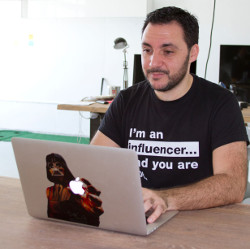
Ismael Elqudsi, CEO, SocialPubli.com
Photo: SocialPubli.com
Word of mouth has always been the best way to communicate a message and in the digital world in which we live, social networks provide a vast arena for communication, collaboration and interaction.
In this busy, crowded social media space, think of influencers as mini megaphones that help to amplify your brand’s key messages and online presence. Their endorsements connect your brand to your target market, delivering powerful results at scale.
A recent study (adweek.com/prnewser/study-influencer-marketing-pays-6-50-for-every-dollar-spent/111584 ) revealed that influencer marketing pays $6.50 for every dollar spent. Marketers have taken notice and according to this infographic (theshelf.com/the-blog/2015/3/17/influencer-marketing-is-the-new-king-of-content) by The Shelf, 65 percent of brands now run influencer campaigns.
The influencer marketing space will continue to grow and evolve as marketers perfect their skills and decipher the best practices for campaigns.
Here are five key ingredients to keep in mind for your next influencer marketing campaign.
Click to read the entire article Five key elements for a successful influencer marketing campaign
Posted by Elena del Valle on September 28, 2016

Touching the Light (Tocando La Luz)
Photo, videos: Doc World, World Channel
Hoping to reach a diverse, young audience under 40, on September 18, 2016 Doc World, a new showcase of non-fiction storytelling from around the globe, launched a selection of 11 international documentaries. The series kicked off with the world premier of The Killing Fields of Dr. Haing S. Ngor. The staff at Doc World selected each film to serve as “a vignette of personal stories and the struggles of different cultures and societies.” Doc World is brought to viewers by World Channel, public television’s nonfiction, news and documentary programming. Scroll down to watch two video clips about the series.
Produced by award-winning filmmaker Arthur S. Dong, the The Killing Fields of Dr. Haing S. Ngor tells the story of Haing Ngor, one of the most recognized survivors of the Cambodian genocide and a man who became a worldwide ambassador for justice in his homeland, only to be murdered in a Los Angeles Chinatown alley. The film was based on Ngor’s autobiography and produced in a mix of animation and live action. All the films in the program will also stream at a later date, and another 10 films are scheduled to become available online later this year. Additional information on the Doc World series may be found at http://worldchannel.org/programs/doc-world/

Chris Hastings, executive producer, World Channel
“The stories we choose are focused primarily outside the United States,” said Chris Hastings, executive producer and creative director, World Channel when asked how the films were selected for inclusion. “That’s the main criteria for Doc World: the films take place outside the U.S. and tell a unique story about person, place, history or event that highlight communities Americans would not normally see. To be selected, the films first have to be great stories that are told in creative way and deal with an array of compelling themes (history, social issues, environment). We find the films for Doc World in few ways, starting with our partners in the U.S. that include ITVS, Center for Asian American Media, National Black Programming Consortia, and others who are actively funding and looking for films.”
Other documentaries in the series include: Tocando La Luz, World Premiere September 25; Five Days to Dance, October 2; Kismet, October 9; Among the Believers, October 16; Waiting for August, October 23; My Atomic Aunt, October 30; A Goat for a Vote, November 6; Tashi’s Turbine,November 13; Prize of the Pole, November 20; and Walking Under Water, November 27. All, except Among the Believers and the first two films, will be airing in the U.S. for the first time.
Hasting’s team attend international festivals like HotDocs in Canada and Sheffield Doc Festival in England to screen and meet with filmmakers to solicit submissions; are in contact with distributors like First Hand Films in Switzerland and Rise and Shine Media in Germany; and receive suggestions from public television channels, like the BBC and The Why Foundation in Denmark.
“It’s been amazing to see how many films that are out all over the world—and are great stories—which have not broadcast in the United States,” Hastings said by email via a publicist. “We are so grateful for what we found thus far. Our team at World is small but very diverse and with our partners we select the films for Doc World together.” When asked what the Doc World budget is he said, “Both Doc World and World Channel are funded by the Corporation for Public Broadcasting.”
About Doc World
About Tocando La Luz
Posted by Elena del Valle on September 23, 2016
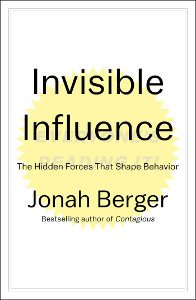
Invisible Influence
Photos: Simon & Schuster, Deborah Feingold
The behavior of others around us affects our own, whether we realize it or not. So believe some researchers, including Jonah Berger, marketing professor at the Wharton School at the University of Pennsylvania. He points out that while firstborn children often perform well academically, have high grade point averages, and score high on exams, their younger siblings tend to pick a non academic path in an effort to stand out. As a result there are few firstborn elite athletes, but laterborn children are over represented in athletics.
In his book Invisible Influence The Hidden Forces That Shape Behavior (Simon & Schuster, $26.99), a hardcover book published this year, he expands on the idea. He wrote the book for anyone trying to influence others or interested in what drives human behavior, the author of Contagious: Why Things Catch On (see Marketing professor explores popularity of things) explained by email when asked about the target audience for his second book.
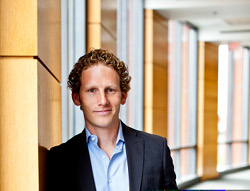
Jonah Berger, author, Invisible Influence
“Contagious is about why products, ideas, and behaviors catch on, and the important role that word of mouth plays in this process,” he said when asked about the difference between the two titles. “Invisible Influence is also about social influence, but more about how it shapes behavior without people realizing it, and how people can apply those insights, both at home and at work. We think we make our own choices, but we’re actually wrong. Other people often make our choices for us.”
The cover was designed to illustrate the main idea of the book: that influence is often invisible. Look at it from one angle and you see the title, subtitle, author name and a reference to his previous book in black and white. Look at it from a slightly different angle and you see the words “everyone’s reading it” within a yellow starburst.
When asked to define invisible influence, Berger said, “Any situation where one person’s behavior or choices influences another’s.” In response to how being extroverted or introverted might play a role in being susceptible to influence he said, “A little, but both introverts and extraverts (extroverts) are shaped by social influence.”
The 264-page book is divided into five chapters: Monkey See, Monkey Do; A Horse of a Different Color; Not If They’re Doing It; Similar But Different; and Come On Baby Light My Fire. Contagious was a New York Times bestseller title in 2013 and named Best Marketing Book of 2014 by the American Marketing Association.
 Click to buy Invisible Influence
Click to buy Invisible Influence
Comments:
Filed Under: Books
Posted by Elena del Valle on September 14, 2016
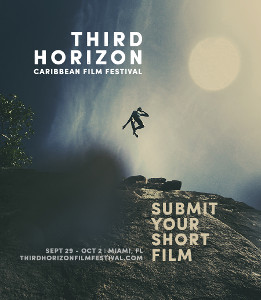
Third Horizon Film Festival
Image: Third Horizon Film Festival
This fall Miami, Florida movie lovers will have Caribbean themed film options during the first Third Horizon Film Festival. Thanks to funding from The Miami Foundation and the Knight Foundation (the festival was winner of the 2014 Knight Arts Challenge) between September 29 and October 2, 2016 the festival will showcase the work of Caribbean filmmakers at O Cinema, Wynwood, 90 NW 29 street, Miami, Florida 33127. Plans are in place to highlight eight full length features and a few short films.
“The Third Horizon Caribbean Film Festival aims to celebrate and empower filmmakers from the Caribbean and its diaspora,” said Donnamarie Baptiste, a consultant to the festival, by email. “With the democratization of filmmaking, the barriers to making a film have become less prohibitive. The festival aims to seize this moment to connect promising Caribbean filmmakers with the resources and opportunities they need to take their films to the world.”
When asked about the selection of films Baptiste said, “First and foremost, we’re looking for films that have relevance to the people of the Caribbean. To that end, we’re focused primarily on filmmakers from the Caribbean or of Caribbean parentage who live outside of the region. That said, in an effort to encourage filmmakers outside of the region to set their films in the Caribbean, we do consider films by non-Caribbean filmmakers based on their relevance to the region.”
The festival’s line-up of movies is selected by a committee appointed by the festival, comprised of Jonathan Ali, Romola Lucas, Jason Fitzroy Jeffers, Keisha Rae Witherspoon and Robert Sawyer. Jason Fitzroy Jeffers, Keisha Rae Witherspoon and Robert Sawyer are co-founders of the festival. A spokesperson declined to identify a budget or staff numbers.
“The name Third Horizon comes from a feeling that popular entertainment is not diverse enough, and that every child should see themselves reflected in what is considered global entertainment,” said Fitzroy Jeffers, who is also executive director, from Barbados via a spokesperson, when asked about the meaning of the festival name. “Growing up I felt I was less than because of the color of my skin, and believed I was from the ‘Third World’-although we know that the ‘first world’ is powered by the blood, sweat and tears from the ‘third world.’ So Third Horizon is that moment and space where the stories, sounds and visions of the so called ‘third world’ find the support, audience, funding and distribution needed to give us equity.”
Full length films scheduled include: Ayiti Mon Amour, Memories of a Penitent Heart, Generation Revolution, The House on Coco Road, God Loves the Fighter, The Stuart Hall Project, Pressure and Crumbs; and shorts include: ABCs, Alto Vista, Antiman, Auntie, Doubles with Slight Pepper, Field Notes: An Unexpected Journey, Mommy Water, Parish Bull, and Short Drop.
Posted by Elena del Valle on September 2, 2016

Nurtured and Nuzzled
Photos: Platypus Media
Washington, D.C. company Platypus Media recently published Nurtured and Nuzzled, Criados y Acariciados (Platypus Media, $9.95), a bilingual booklet for children up to five years of age featuring pretty color illustrations by Mike Speiser. The project required thirty months from concept to review copy publication. The biggest challenge it faced was the translation.
When asked what prompted her to publish Nurtured and Nuzzled Dia Michels, publisher, Platypus Media, said, “Books are like food; they nourish us. Our work, as book publishers, is to excite kids about reading and to give adults the tools they need to keep kids engaged in books. Research shows that kids who love reading are more successful in life. And the latest research on the Word Gap, tells us that brain development is dependent on exposure to words and interactions with adults. We were not looking to publish an early childhood book when Mike Speiser’s art landed in our mailbox, but once we saw it, we knew it needed to be put into the world. Books have the power to change lives and, we hope that, in a small way, we can be a part of that process.”
“I chose species that people could relate to,” Speiser replied by email when asked how he selected the animals for inclusion. “There are so many animals to choose from, but they have different levels of appeal. Some of them you can’t possibly use. You don’t get a warm feeling when you look at, say, armadillos. A locust has a fascinating life, but no one wants to know about locusts. There are plenty of other species that are appealing, so I picked those. Elephants, penguins and flamingos have universal appeal. I want to do something for the planet. Connecting with people is my way of doing that. Almost everything we care about stems from our childhood experiences. I was lucky. When I was young, I had parents who were very attentive. We always had a cat and she had several litters of kittens. Being a witness to birth had a huge impact on me. I have been drawn to capture the magnificence of animals ever since. Picking animals that have broad appeal encourages readers of the book to help life. It is my way of celebrating life. “I want to reach children at that special age because that’s when their brains are developing really quickly. If I can get them to love animals when they are young, I can make a different in that child.”
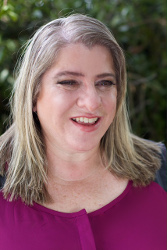
Dia Michels of Platypus Media
“Originally the book was all about the artwork and the messaging,” Michels said when asked why she decided on a bilingual book. “In the winter of 2015, I was speaking at the National Fathers and Families Coalition of America conference in Los Angeles. I had a prototype of the book with me. A number of the attendees suggested it would be a more powerful book if it were bilingual. They stressed that adding Spanish would allow us to reach more kids, and, more importantly, kids who could really benefit from a book like this. I listened, and, as soon as I returned to the office, we started redesigning the book to add the second language.”
After researching bilingual education (she referred to sciencenaturally.com/files/BilingualEd.pdf) she became convinced that there were more Spanish speakers in the U.S. than there are in Spain; “that nearly 25 percent of all K-12 students in the U.S. are Latino—and the percentage is growing.” She went on to say that the numbers were compelling.
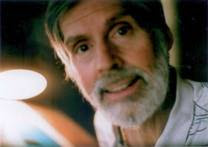
Mike Speiser, illustrator, Nurtured and Nuzzled
“Nurtured and Nuzzled, Criados y Acariciados was our first bilingual book,” said Michels when asked about similar projects in the future. “Once we made the commitment to make it bilingual, we wanted to carry that commitment to our other projects. Our sister company, Science, Naturally, produces math and science books for upper elementary and middle school. We are incredibly excited about the release of our first bilingual book for this list, One Minute Mysteries: More Short Mysteries You Solve With Science! Misterios de un minuto: ¡Más misterios cortos que resuelves con ciencias! It is the bilingual edition of our best-selling One Minute Mystery books. We are now working on the bilingual edition of our bestselling math book: One Minute Mysteries: Short Mysteries You Solve with Math!, Misterios de un minuto: ¡Misterios que resuelves con matemática! will be released in April 2017. We will carry this commitment forward and work to create bilingual products for the foreseeable future. We hope to do another early childhood book with Mike Speiser exploring different habitats, but it is still on the drawing board.”
The work of Speiser, an artist who lives next to the Black Hills of South Dakota, has been featured on the covers of Wild Animal Baby magazine and on fundraising products for science organizations. His paintings have been displayed at the Leigh Yawkey Woodson Art Museum. He is involved with efforts to protect the natural world for future generations. He sent his wok to Platypus Media after seeing If My Mom Were A Platypus at his local library.

Click to buy Nurtured and Nuzzled – Criados y Acariciados
Comments:
Filed Under: Books
Posted by Elena del Valle on August 24, 2016

A Lumé bikini
Photos: Lumé
Paula Daza was born in Colombia and raised in the United States. As a young woman she decided she wanted to raise funds for people in her country of birth. In 2014, she founded Lumé Swimwear, a Katy, Texas based company Daza describes as “a 100 percent ethical luxury fashion brand that combines fashion, art, and giving back.” Lumé makes swimwear, beachwear, mochila bags and shoes from nylon and spandex in Medellin, Colombia and sells the vast majority, 90 percent, to customers in Europe. She hopes to grow her domestic market share.
The company, which Daza says follows fair trade practices and supports underprivileged children, offers 49 styles, including men’s trunks, ranging in price between $140 and $170 each. A page on the company website features photos of people with sewing machines in the background holding signs that say “I made your clothes” at the top. At the bottom there are photos of adults and children some of them holding toys. Lumé donates 10 percent of proceeds to the JuanFe Foundation (juanfe.org/en/). To date donations have reached $4000.

Paula Daza, owner, Lumé Swimwear
When asked about her company’s charitable donations Daza said by email via her publicist,“…and every summer I spent it in Colombia and would see the need of the people, the homeless children without shoes, the poor living in slums and it would just break my heart. I promised myself at that young age that one day I would find a way to give back to my native country in some way how ever little it may be.”
Before establishing her own company Daza worked in merchandising, buying and developing and launching other brands and designers. After many years in the fashion industry in New York City she found a path to follow through on the promise she had made herself. Overcoming a period of life changes led her to decide she wanted to start fresh by pursuing her three passions in life: fashion, art, and giving back. That in turn prompted her to establish her company.

Euphoria, a painting by Edgard Medina, served as inspiration for Lumé products.

Lumé beachwear inspired by art by Edgar Medina
To make its swimwear products Lumé transfers the original paintings of artists into prints for women who like fashion and art, seek to be unique while at the same time like purchasing items that are sustainable and eco-conscious. In exchange the artists receive a 10 percent license fee and exposure for their art. The 2016 collection features the work of two artists, including Edgar Medina whose art appears above. Medina is a Houston, Texas based abstract painter originally from Mexico.
“The process of picking artist to collaborate with is a very organic process, many artist write to us and some we have found by seeing there art work first,” Daza said when asked how she selects the artists she works with for the designs. “We also look to work wth artist that are involved in their community, it is important to work with artist that share that same vision of giving back and helping other through art. It is important for us at Lume to work with artist that are both an exceptional artist with unique work and at the same time philanthropic, because that is at the core of our co mission.”
“The reason I participate in this model is because I liked the idea to have my work in swimwear collection,” said Medina by email. “But, what made me fall in love even more is the charity work behind Lume Swimwear. A percentage of the sales goes back to a charity of choice. As an artist, I am very committed to give back to my community and help others in need through my work. I am so blessed to be able to give back to my community through my work. It is so satisfying to see the proceeds from a sale of an Edgar Medina original go to help a child with cancer, provide medical services to low-income teens or send a child with Muscular Dystrophy to camp. It is very important to me to give back to the community in honor of all that I have achieved and overcome in my own life.”
According to his bio, Medina originals have been shown across the country at galleries in Chicago, New Orleans, Santa Fe and Houston; and Medina has been a featured artist at Art Chicago, The Los Angeles Art Show, Art Santa Fe and Red Dot Miami. He works out of his studio space in Montrose within Native Citizen, which features his gallery where clients can visit him at work.
Posted by Elena del Valle on August 15, 2016
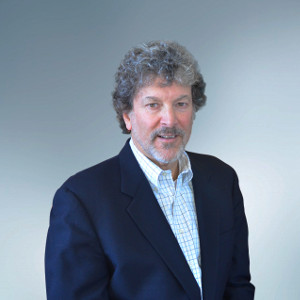
Chris Edmonds, CEO, The Purposeful Culture Group
Photo: The Purposeful Culture Group
A podcast interview with Chris Edmonds, CEO, The Purposeful Culture Group, is available in the Podcast Section of Hispanic Marketing & Public Relations, HispanicMPR.com. During the podcast, he discusses driving results through culture with Elena del Valle, host of the HispanicMPR.com podcast.
After a 15-year executive career leading high performing teams, Chris began his consulting company in 1990. He has also served as a senior consultant with The Ken Blanchard Companies since 1995. Chris is one of Inc. Magazine’s 100 Great Leadership Speakers and was a featured presenter at South X SouthWest 2015. Chris is the author of The Culture Engine, Leading At A Higher Level with Ken Blanchard, and five other books. Chris’ blog, podcasts, research, and videos can be found at Driving Results Through Culture and on Twitter at @scedmonds.
To listen to the interview, scroll down until you see “Podcast” on the right hand side, then select “HMPR Chris Edmonds” and click on the play button below or download the MP3 file to your iPod or MP3 player to listen on the go, in your car or at home from the RSS feed. Some software will not allow flash, which may be necessary for the play button and podcast player. If that is your case, you will need to download the file to play it. To download it, click on the arrow of the recording you wish to copy and save it to disk. The podcast will remain listed in the August 2016 section of the podcast archive.
Posted by Elena del Valle on August 10, 2016

Soledad poster
Photos, video: Candy Factory Films
Soledad, a suspenseful, soulful 95-minute indie drama released in theaters July 26, 2016 features a world-weary ex-con limo driver and a high school couple he’s driving to their prom in Los Angeles. The work of first-time writer-directors Eduardo Maytorena and Wayne Mitchell the film received the Grand Jury Prize Runner-Up at the 2015 Dances with Films Festival, and was an Official Selection at the San Francisco Latino Film Festival and the 31 Chicago Latino Film Festival. Soledad, a Candy Factory Films movie, was released via VOD (video on demand) and digital HD on iTunes, Amazon, Google Play and Vudu. Scroll down to watch a video clip.
In the film, Victor (Jesse Celedon), a lonely, Latino limousine driver lives a solitary existence: lifting weights in his small apartment, saying silent grace over breakfast, and enduring the disrespect of his clients night after night. One evening, after defending Raquel (Montanna Gillis, The Vatican Tapes, Don Peyote), his well-off passenger, from being assaulted by her prom date, Victor’s simple act of compassion sets off a series of events destined to bring back a past he has fought desperately to escape. The film takes viewers on a meandering and sometimes violent road trip with sexual situations (no nudity), through the city of Angels focusing on the unlikely friendship between Victor and Raquel.

A scene from Soledad
Soledad was shot over 17 days between January and April of 2014, mostly in Downtown Los Angeles, Silverlake, Echo Park, Pico Rivera, Glendale, and Mission Hills, with a budget of $120,000. In 2015, it toured U.S. and international film festivals.
“We never shot more than three nights in a row since we could only afford to use the limo on Mondays, Tuesdays, and Wednesdays, (Weekend rates were too steep), ” said Mayortena by email through the film’s publicist when asked about the making of the movie. “Post production lasted 10-12 months as we continued to make changes up to our delivery to the distributor.”
When asked about funding for the movie, Mayortena replied, “I work at a Spanish radio station as a creative sales director. I shared my vision of Soledad with one of my clients Douglas Bravo and he was intrigued. After a few more conversations he agreed to give us the money on two conditions. One was that we (myself, writing directing partner Wayne Mitchell and lead actor Jesse Celedon) invest our own money in the film so his investment was protected. The second was to take our vision of a short film and grow it to a feature so there would be an opportunity to see some return on investment. We are very blessed and grateful to Douglas for challenging us to dream bigger.”
Candy Factory Films, founded by Jason Ward, strives to be a “forward-thinking, filmmaker-friendly multimedia company dedicated to producing and distributing high impact, unique and compelling films.”

Click to buy Soledad
































